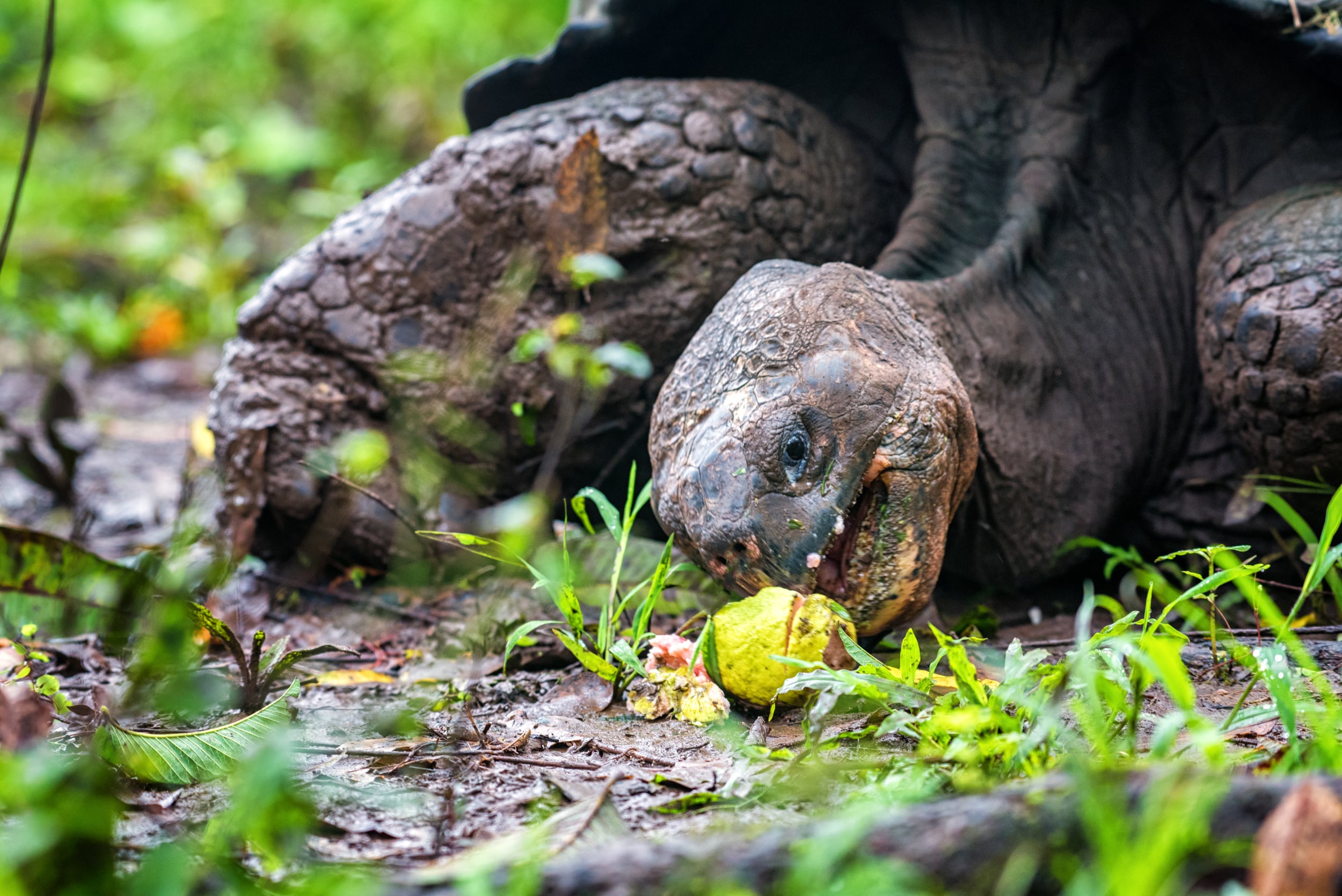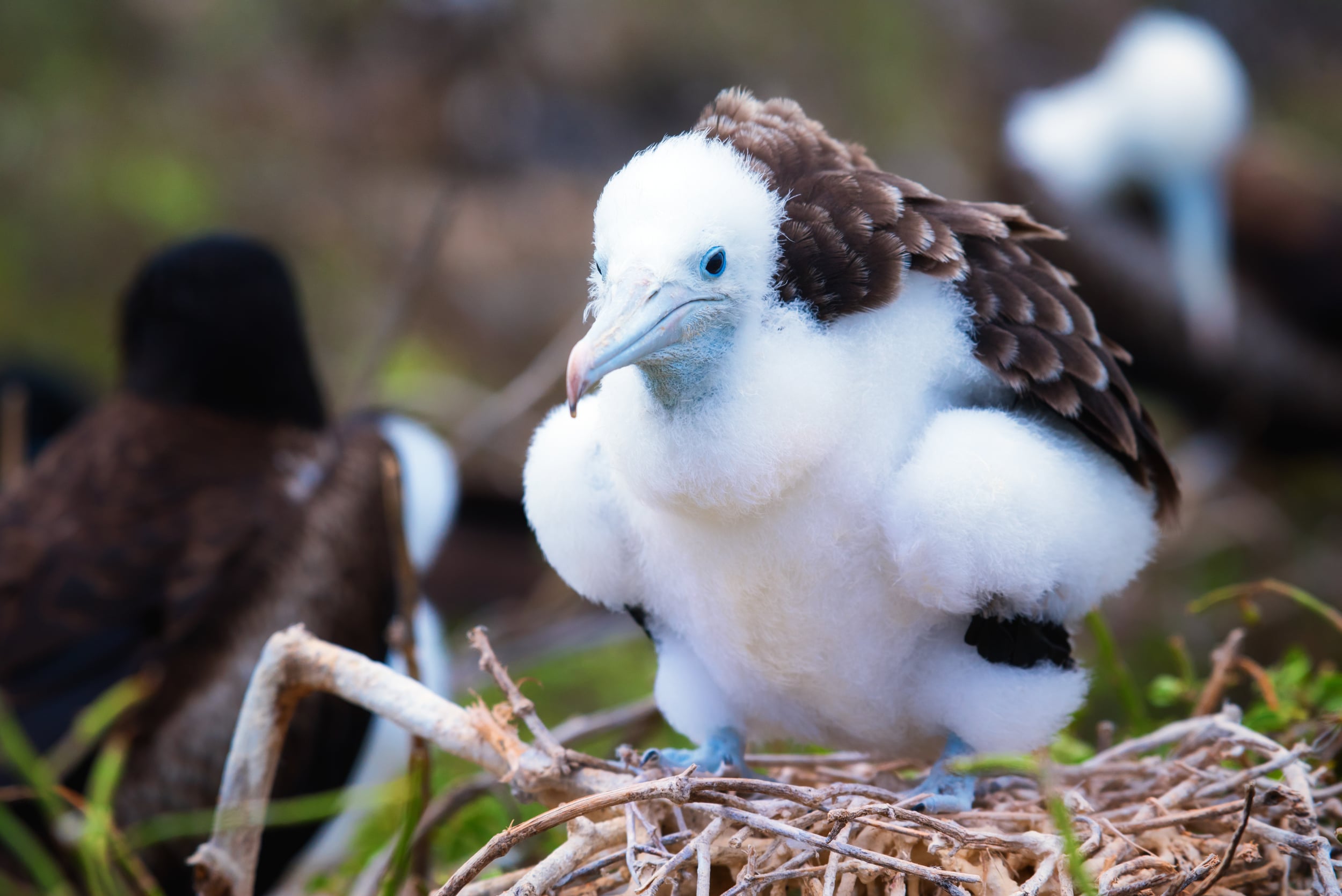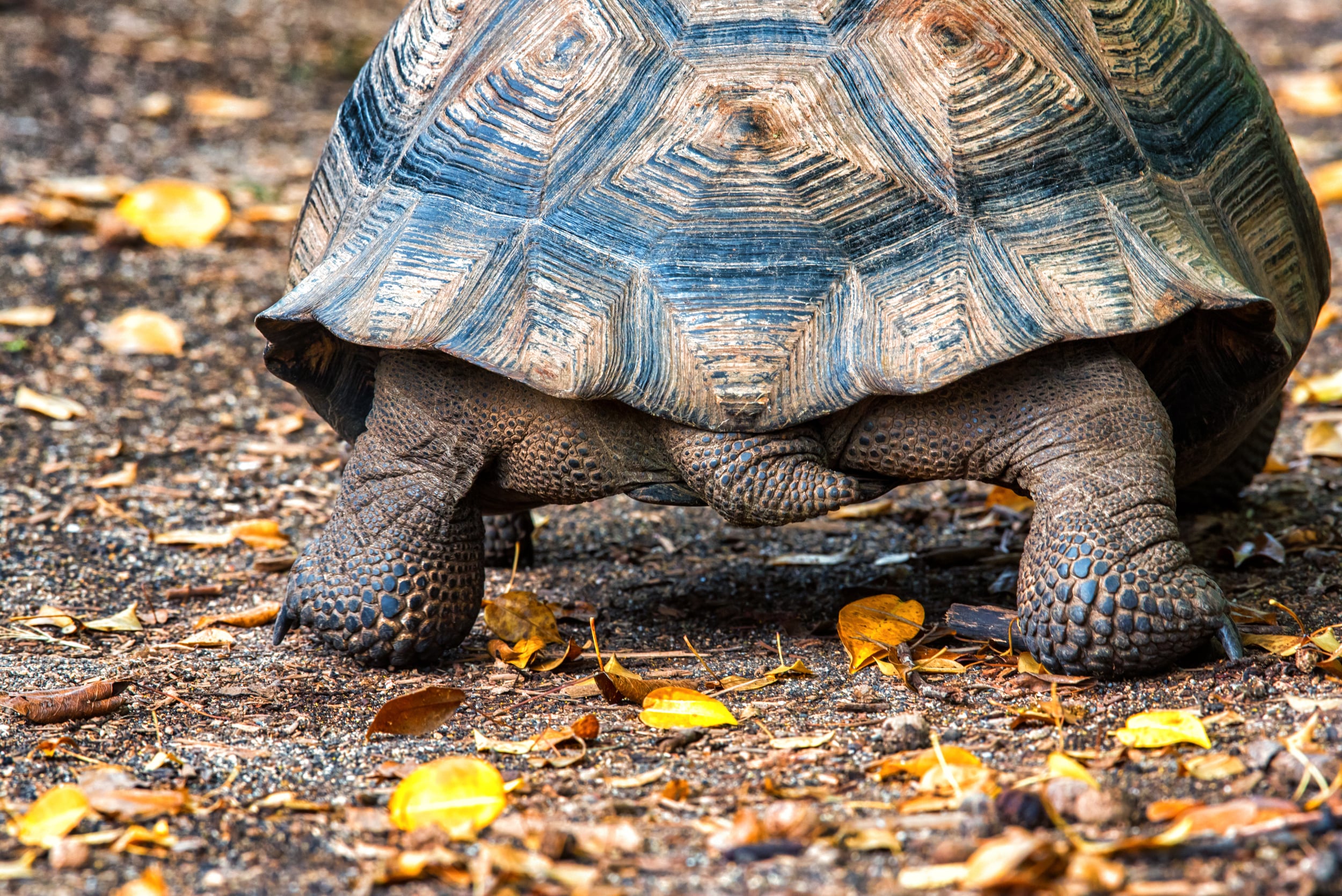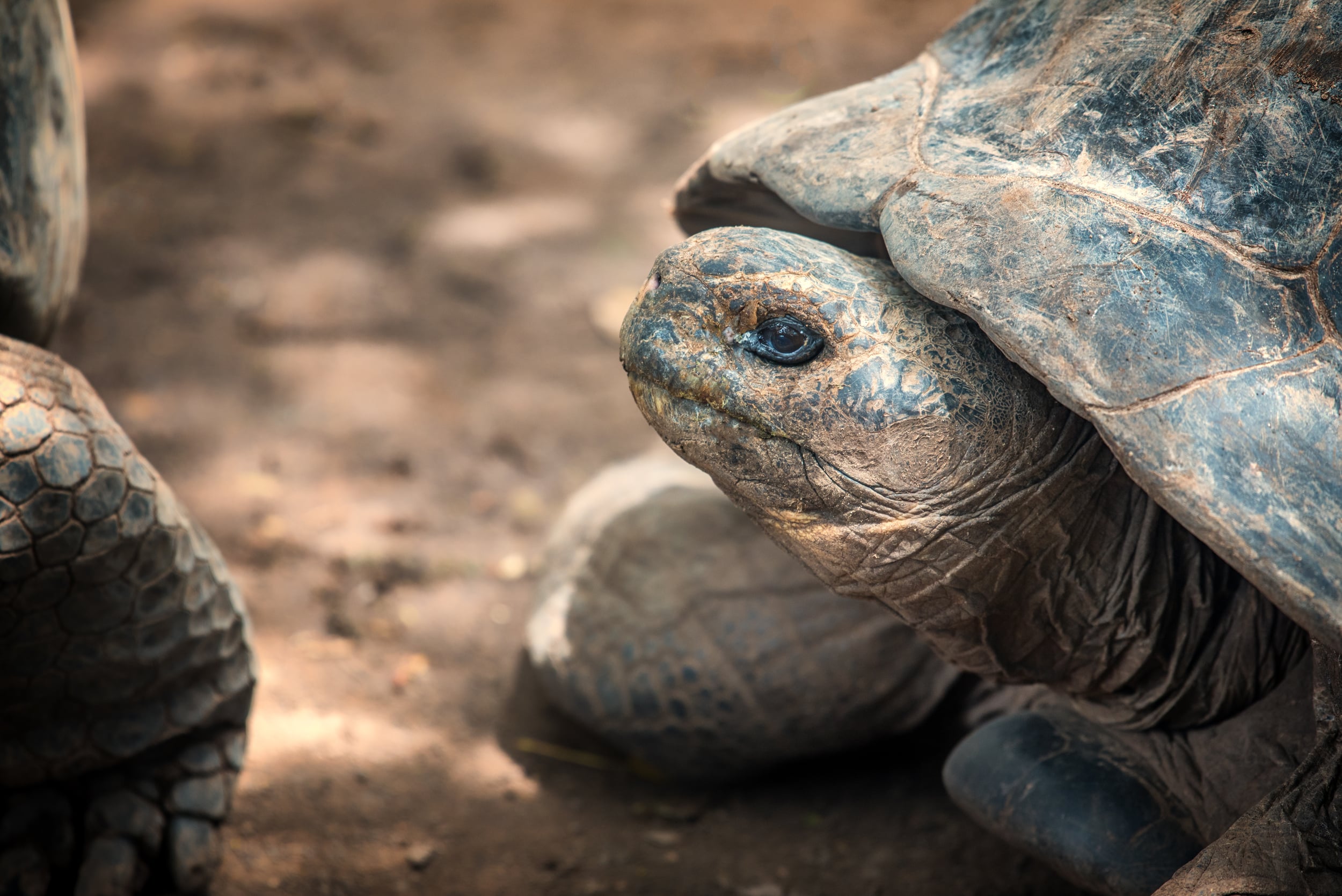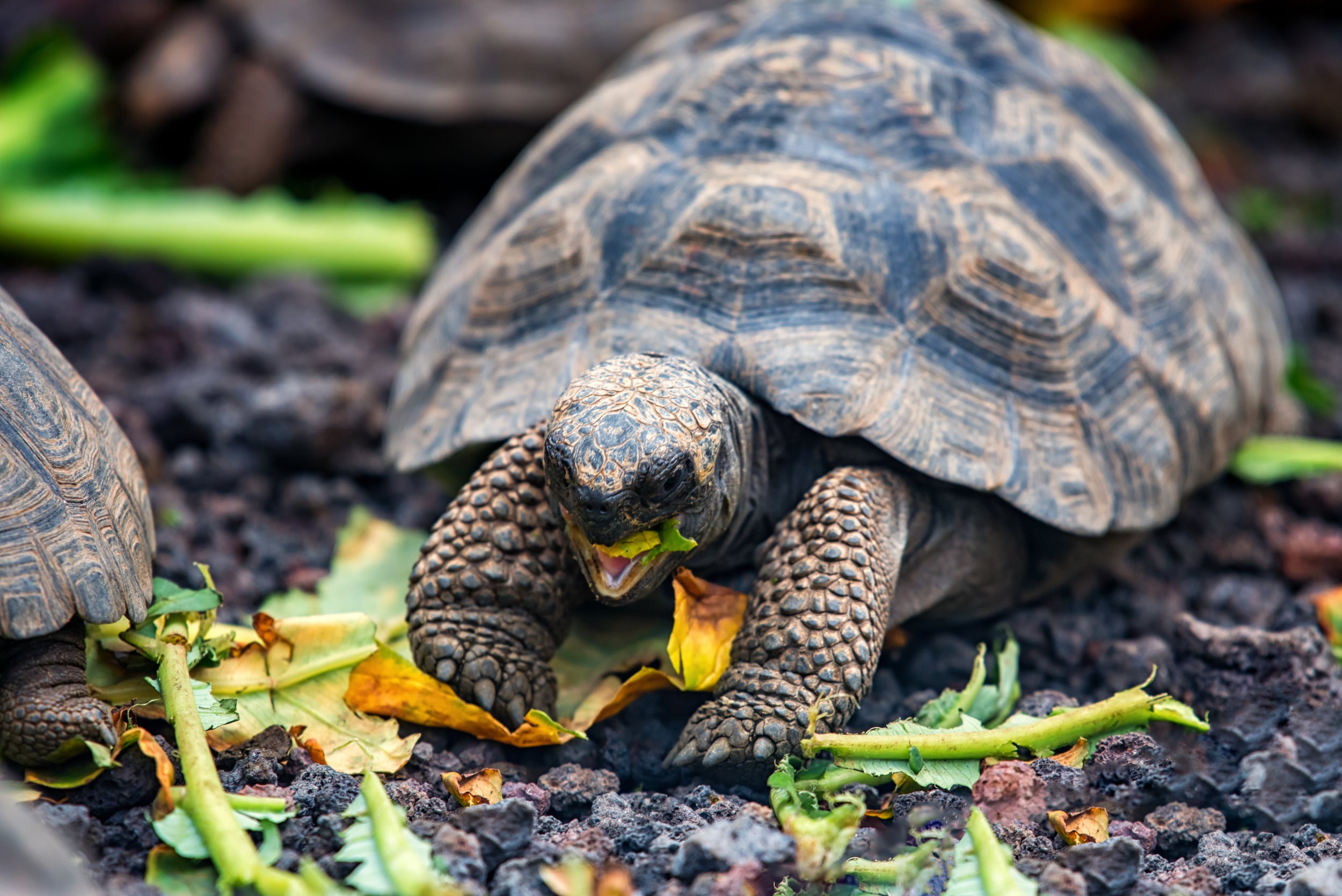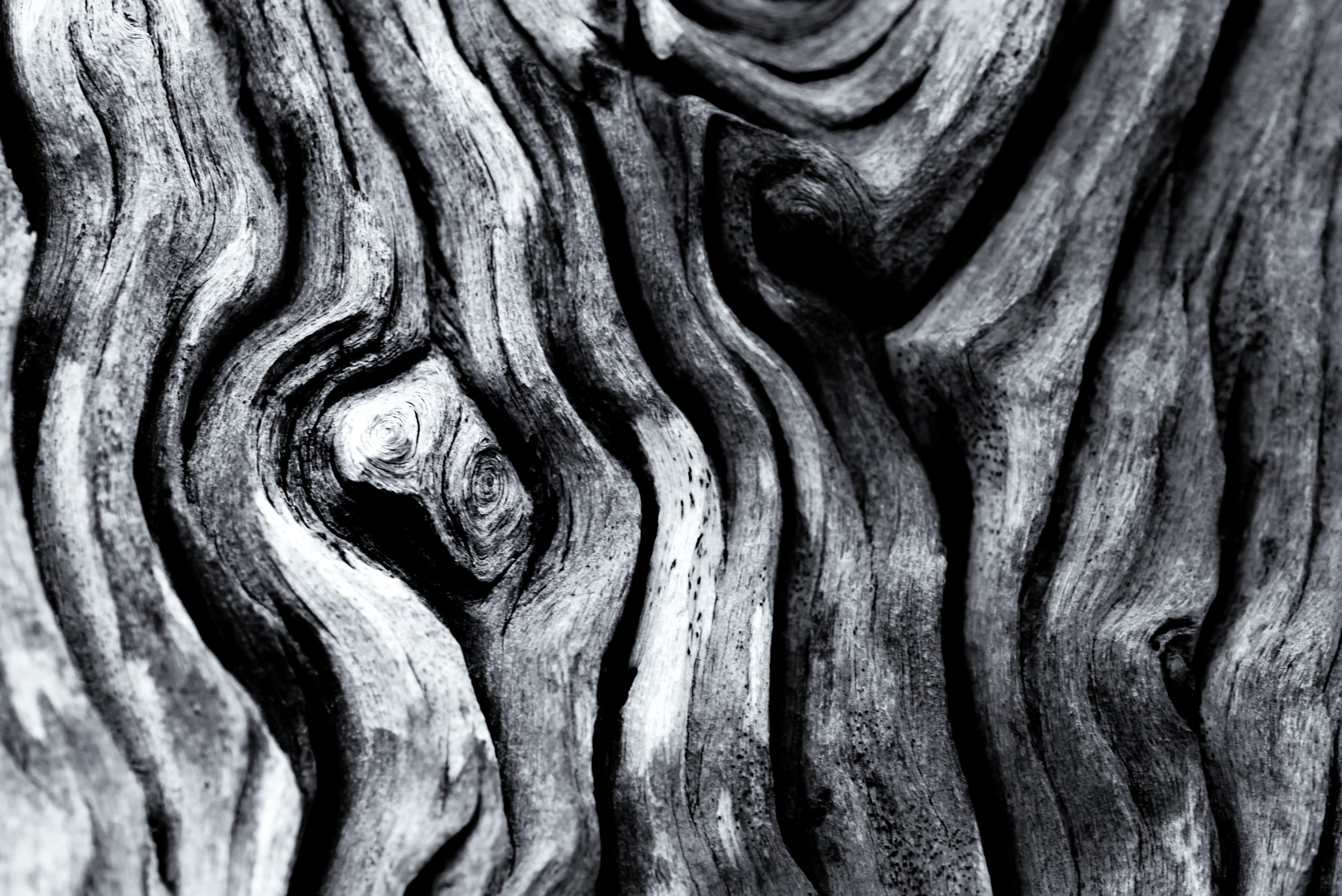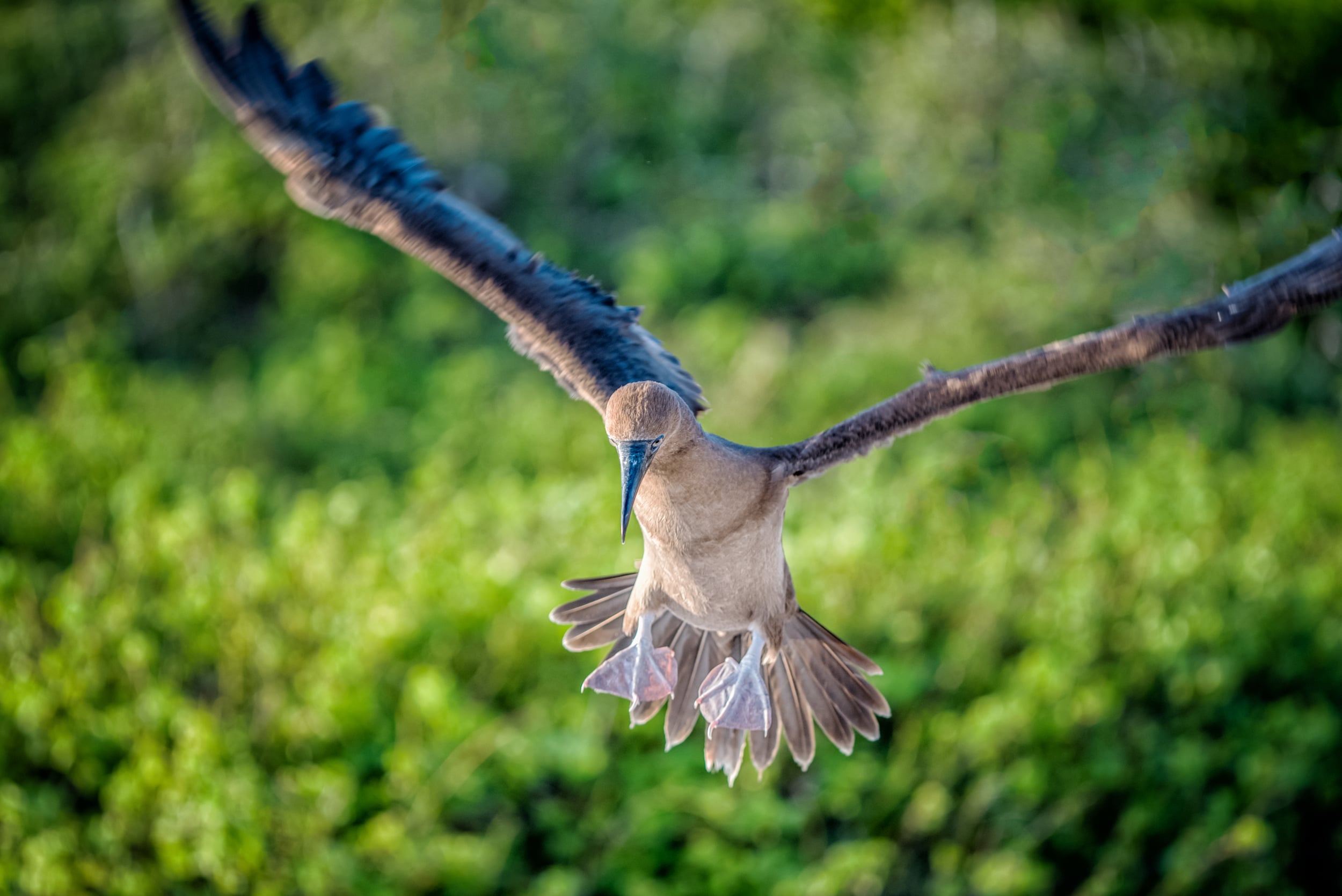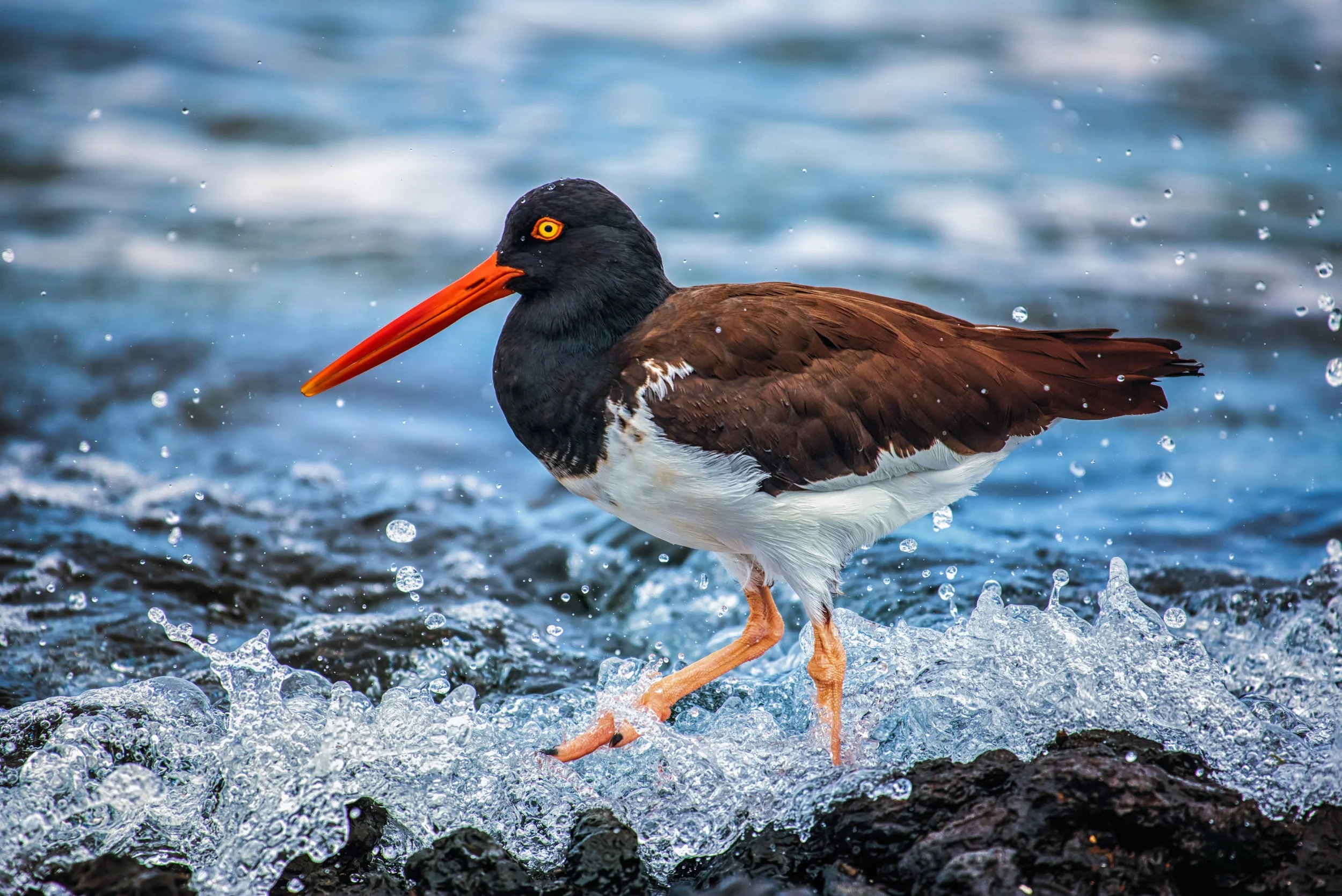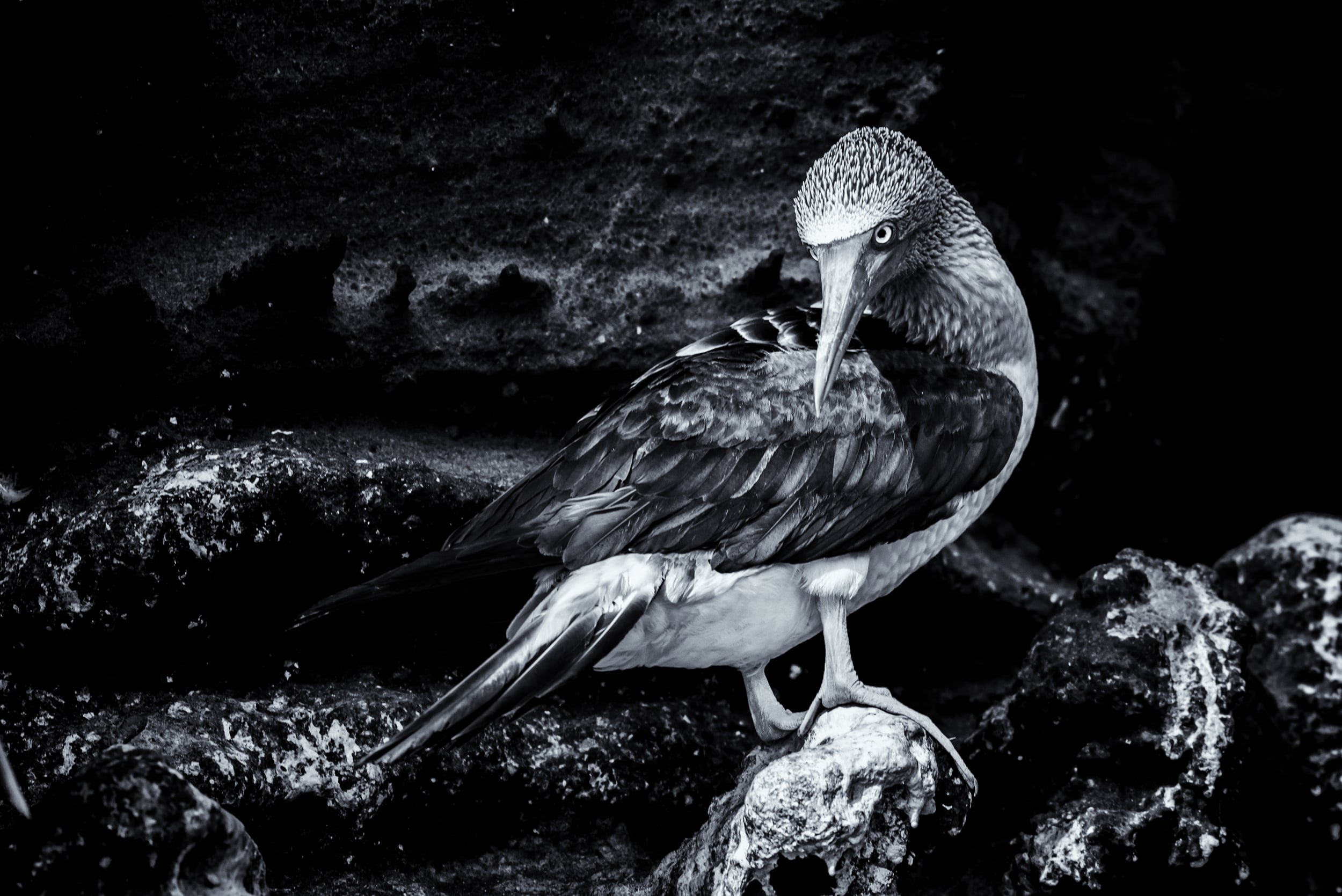Full Nature
I spotted this giant tortoise on the last day of our trip, literally during the very last hour before needing to go back to the airport. He and his reflection created a beautiful full moon-like appearance
This photo was featued in the Parks and Wildlife story written by Charlie Hamilton James for National Geographic.
Just a little bit closer
These little Galapagos Storm Petrels would follow our ship every morning and would feed on plankton while just barely grazing the surface of the water - it almost looked like they were dancing on the surface of the water.
This photo was shortlisted for the Wildlife Photographer of the Year 2016 competition by the Natural History Museum of London.
Pirate of the Wind
Our naturalist told us that the frigate birds are called the "priates of galapagos" because they eat by stealing food away from other birds - never by hunting thsemselves. I found this one protecting its baby (behind in white) while a huge gust of wind rolled through behind her spiking up her hair.
Blowing Bubbles
My first underwater picture smile emoticon This curious seal kept following me around--swimming above, below, while looking right at me the whole time. I waited for just the right time to catch him blowing out air as he rose to the surface. Another thing I liked is if you look close, a couple of the bubbles appear to be in the shape of jellyfish.
Exposed
Our guide and naturalist said "the Swallow-tailed Gull is the prettiest gull in the world."
Skull of Death
The remains of a whale which had washed onto the shore of Fernandina Island a long time ago.
El Niño
During El Niño season, marine iguanas evolved to literally shrink down in size due to a reduction in their food supply. This male iguana is literally starving to death--El Niño is bringing warmer waters which replaces their normal algae food with a different algae that isn’t part of their regular diet (which they can not digest). In past El Niño events, the marine iguana populations have been reduced by as much as 70%.
Magnificent
Gangs of Galapagos Mockingbirds would literally dance in front of each other, as a means to claim and protect their territory.
Reflections of a Gull
If you look really closely in the gull's eye, you'll see a reflection of sunset and myself taking his picture.
Standing on the Equator
The Galapagos penguin is the only penguin that lives north of the equator in the wild.
Calling Card | Tinder Worked
Left: During mating season the male Frigatebirds will blow up their red pouch to attract all the ladies.
Right: This male Frigate bird successfully found his mate while I was photographing him and afterwards he proudly showed off his chest and called out in success.
I see you | My grand entrance
A rare spotting of the Galapagos Rail which typically lives deep in the cover of the forest.
Life will find a way
The lava cactus are considered frontier species and are one of the first things to grow on top of the lava surface.
Left: This is a closeup of the surface of Fernandina Island - the newest baby island in the Galapagos archipelago.
Middle: The mangrove tree is a salt tolerant plant that grows on the edges of lava on the Galapagos islands.
The trade
This was a really rare sighting. These hermit crab were lining up from smallest to biggest, to either exchange shells or take another fellow crab's shell-- depending on how fierce the competition was.
Away I go
A wasp in flight
Twinkle
A red footed Booby
Wingless Flight
The Galapagos Cormorant is one of the best examples of evolution because these birds have lost their ability to fly. They are the only species of cormorant which are flightless because in the Galapagos there was no need to fly - in Galapagos they could swim to get all of the food they needed.


